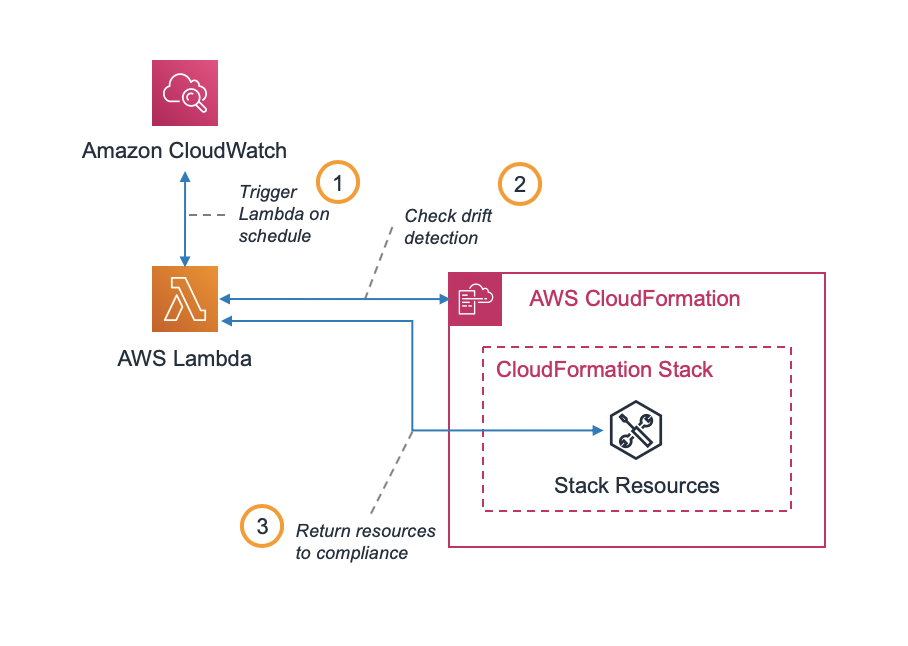AWS Cloud Operations Blog
Category: AWS CloudFormation
Automated configuration of Session Manager without an internet gateway
Session Manager is a fully managed AWS Systems Manager capability that you can use to manage your Amazon Elastic Compute Cloud (Amazon EC2) instances, on-premises instances, and virtual machines (VMs) through an interactive one-click browser-based shell or through the AWS CLI. Session Manager also provides secure and auditable instance management without the need to open […]
How BBVA USA delivered security and governance at scale using management tools
As BBVA USA began its digital transformation journey, the security operations team had to improve its processes around provisioning and baselining of AWS accounts. The demand for new AWS accounts continued to increase from multiple application teams within the bank. In an effort to standardize new accounts within the enterprise, BBVA USA built an automated […]
Identifying resources with the most configuration changes using AWS Config
AWS Config tracks changes made to supported resources and records them as configuration items (CIs), which are JSON files delivered to an Amazon S3 bucket. These are delivered in 6-hour intervals, as configuration history files. Each file contains details about the resources that changed in that 6-hour period, for the respective resource types, such as […]
Instantly monitor serverless applications with AWS Resource Groups
Serverless computing allows you to build and run applications without thinking about servers. Building serverless applications means that your developers can focus on their core product instead of worrying about managing and operating servers. This reduced overhead lets developers reclaim time and energy that can be spent on developing great products that scale and are reliable. […]
Automating Service Limit Increases and Enterprise Support with AWS Control Tower
In this post, we show how you can use Account Factory in AWS Control Tower to provision new accounts that are ready for your teams to use. We demonstrate how you can use AWS Control Tower lifecycle events to automatically request regional service quota limit increases and enrollment in AWS Enterprise Support using the respective […]
Write preventive compliance rules for AWS CloudFormation templates the cfn-guard way
Continuous delivery pipelines, combined with infrastructure as code tools like AWS CloudFormation, allow our customers to manage applications in a safe and predictable way. CloudFormation helps customers model and provision their AWS and third-party application resources, with features such as rollback to provide automation and safety. Together with tools such as AWS CodeBuild, AWS CodePipeline, […]
AWS CloudFormation support for AWS Service Catalog products
This blog post was updated on 7/21/2020 to reflect recent changes to how AWS Service Catalog obtains outputs from provisioned products. For more information see Provisioned product outputs are now available in AWS Service Catalog. You can use AWS Service Catalog to create preconfigured products that your developers can launch. In a large organization, it’s […]
Implement automatic drift remediation for AWS CloudFormation using Amazon CloudWatch and AWS Lambda
“Stack drift” is a common occurrence for organizations using AWS CloudFormation, and remediating stack drift represents a persistent and tedious challenge for organizations managing critical infrastructure with CloudFormation stacks. Stack drift occurs when the actual configuration of an infrastructure resource differs from its expected configuration. Typically, this is caused by users editing resources directly by […]
How to automate the creation of multiple accounts in AWS Control Tower
Last updated 24 Feb 2022 to support submission of 300+ account entries per each deployment. Last updated 17 Nov 2021 to handle the changes to Account Factory inputs parameters with Nested OU support. Last updated 25 JUL 2021 to pass account details from local S3 bucket. Many customers that we work with are creating and […]
Enabling AWS IAM Access Analyzer on AWS Control Tower accounts
Many of the customers we work with look for ways to manage compliance and gain additional insights across their AWS multi-account organization from a central location. We often begin the discussion with AWS Control Tower, as it offers the easiest way to set up and govern a multi-account AWS environment. AWS Control Tower is an […]









